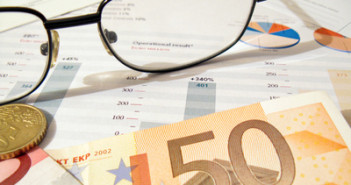EUR/USD continues to point upwards, as the pair trades in the low-1.38 range on Thursday. German Ifo Business Climate rose in March and beat the forecast. Later in the day, ECB President Mario Draghi will deliver remarks at an event in Amsterdam. In the US, there are two key releases on Thursday – Unemployment Claims and Core Durable Goods Orders.
Here is a quick update on the technical situation, indicators, and market sentiment that moves euro/dollar.
EUR/USD Technical
- EUR/USD edged higher in the Asian session, closing at 1.3833. The pair is steady in the European session.
Current range: 1.3800 to 1.3830.
Further levels in both directions:Â 
- Below: 1.38, 1.3740, 1.37, 1.3650 and 1.3580.
- Above: 1.3830, 1.3895, 1.3964 and 1.40.
- On the upside, the pair is testing resistance at 1.3830. The next resistance line is 1.3895.
- Â 1.38 is a weak support level. 1.3740 is stronger.
EUR/USD Fundamentals
- 8:00 German Ifo Business Climate. Exp. 110.5, actual 111.2 points.
- 8:00 Spanish 10-year Bond Auction. Actual 3.06%.
- 9:00 ECB President Mario Draghi Speaks in Amsterdam.
- 12:30 US Core Durable Goods Orders. Exp. 0.6%.
- 12:30 US Durable Goods Orders. Exp. 2.1%.
- 12:30 US Unemployment Claims. Exp. 309K.
- 14:30 US Natural Gas Storage. Exp. 40B.
*All times are GMT
For more events and lines, see the Euro to dollar forecast.
EUR/USD Sentiment
- German Business Confidence Climbs: German Ifo Business Climate continues to look solid. The key indicator improved to 111.2 points in March, beating the estimate of 110.5. The indicator has been above the 110 level throughout 2014, indicating strong optimism in the business sector with regard to the German economy. Key German data can have a strong impact on the movement of EUR/USD, as Germany is the Eurozone’s largest and most important economy.
- PMIs highlight French/German divide: After an extended Easter holiday, there was plenty of numbers to crunch out of the Eurozone. German and Eurozone PMIs beat their estimates, while the French releases missed their estimates and weakened in March. The data highlights the discrepancy between improving German and struggling French releases. Still, the French PMIs are hanging tough above the 50-point level, indicative of expansion in the manufacturing and services sectors. Â
- Eurozone inflation a sore spot: Eurozone inflation indicators continue to point to weak inflation, with no end in sight. German PPI posted a decline of -0.3%, its worst showing since December 2012. Final inflation data for March came out slightly lower than expected. While headline inflation was confirmed at 0.5%, the lowest since 2009, core inflation was downgraded to 0.7%, matching the low level seen in late 2013, which was the post-crisis low. The ECB has downplayed the danger of deflation, but Mario Draghi may have to take some action to try and raise inflation in the hope of stimulating the lackluster Eurozone economy.
- Markets hopeful for spring thaw: After a harsh US winter which took a toll on the economy, April figures have been encouraging. Recent job figures have been solid and retail sales exceeded expectations. An outstanding reading from the Philly Fed Index, has added to the hopes of a serious spring bounce. This week’s housing numbers were not as sharp, as both New Home Sales and Existing Home Sales have been on a sustained downward trend.
- Ukraine crisis deepens: The markets haven’t reacted to events in Ukraine so far, but that could change if the violence in the east of the country worsens. Russian President Vladimir Putin has threatened to act on his “right†to invade Ukraine, and has also given the country an ultimatum regarding its gas debt. The gas supply from Russia to western Europe is in danger, and if the situation spills out of control, we could see a sharp response from the markets. US Vice-President Joe Biden is in Kiev for a symbolic visit. The West doesn’t have many cards to play against Russia, so every move by Putin will be scrutinized and could impact on the markets.
More:Â Forex Markets Likely to Goad ECB into Action



